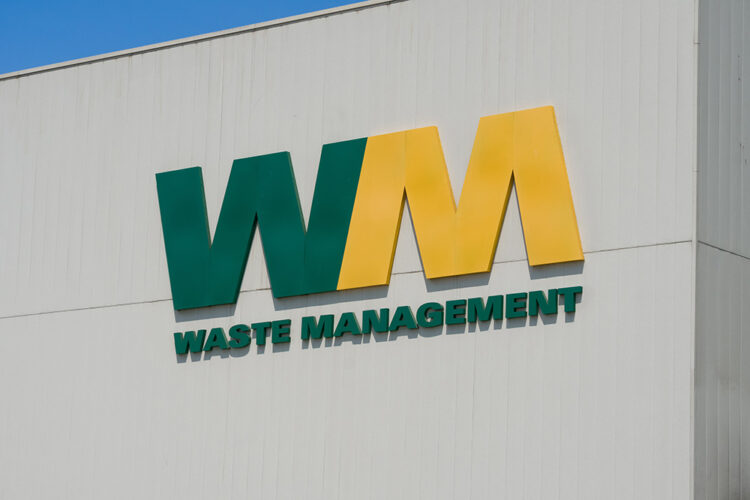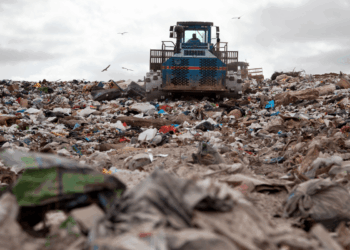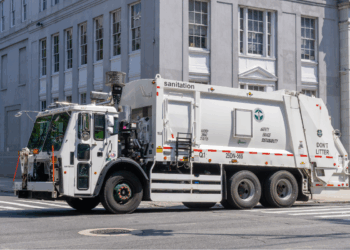The largest North American hauler recovered significantly more plastic in 2020 compared with the prior year, the company recently reported. Waste Management also offered details on recent recycling investments and offered its outlook on domestic markets.
Waste Management handled 15.03 million short tons of recyclables in 2020, down from 15.51 million short tons in 2019. That’s according to the publicly-traded company’s 2021 sustainability report, which was released Oct. 13.
The decrease was in large part due to a substantial decline in recovery of paper, which is, by weight, the largest stream that the company handles. Paper recovery was hit hard by business closures early in the COVID-19 pandemic.
But the company recycled significantly more plastic in 2020. Waste Management handled 1.00 billion pounds of plastic, up from 807 million pounds in 2019.
Waste Management reported seeing a 16% contamination rate across its materials recovery facilities (MRFs). That’s down from 17% in 2019 and 18% in 2018, but it’s up from 15% in 2017. The company has a goal to hit 10% contamination by 2025.
Waste Management operates 52 single-stream MRFs, 30 commercial recycling plants, and various other recycling- and composting-related facilities.
Market discussion and sorting investments Waste Management wrote that all of the residential plastic it collects in the U.S. is sold to domestic markets.
The company also offered details on market trends it perceived during 2020. Recovered plastic markets began to improve “as the economy began to recover from COVID-19,” the company reported.
“This is primarily due to the commitments that manufacturers have made to using post-consumer content in their packaging,” Waste Management added. “By mid-2021, pricing for #1 PET (water and soda bottles), #2 HDPE (milk jugs) and #5 PP (yogurt and cottage cheese containers) reached an all time high. Demand for these materials exceeded the supply of material collected for recycling. These robust market conditions have supported significant investments in recycling infrastructure, further strengthening recycling programs in North America.”
The company added that minimum-post-consumer-content mandates, which are being considered in a handful of states and approved in others, will “further encourage businesses to make the shift” to using recycled feedstock.
Waste Management also referenced its investments in U.S. recycling, spending that has totaled $100 million annually over the past three years. This spending has gone into construction of five new MRFs and equipment upgrades at 26 facilities, the company reported.
Notable facility investments include the company’s Chicago “MRF of the Future,” completed in 2019 and capable of processing nearly 250,000 tons per year; the company’s Salt Lake City MRF, completed in 2020 with a capacity of 125,000 tons per year; a residential and commercial facility in Morrisville, N.C., completed in 2020 with a capacity of 80,000 tons per year; the Sun Valley Recycling Center, which opened in 2020 with a capacity to process 500 tons per day of recyclables; and a San Leandro, Calif. back-end facility that recovers recyclables from residual waste.


























